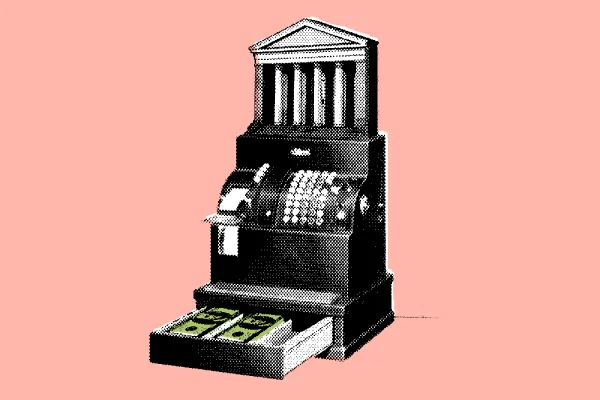Is 5 cents a share too steep? Buy-side firms are considering basis-point-structured trading commissions.
By Charles Keenan
June 2002
Institutional Investor Magazine
As part of their campaign to reduce their trading costs (Institutional Investor, April 2002), some large money managers are flirting with a provocative notion , promoting the use of basis-point-structured commission payments to the brokerage firms that execute their trades.
In this brave new world, buy-side firms would pay commissions based on a percentage of the trade's total dollar value instead of the number of shares. Currently, brokerages and money managers negotiate a per-share commission rate, usually determined by the difficulty of the trade. The standard institutional commission: 5.2 cents a share, according to research firm Elkins/McSherry.
Fidelity Investments, among other buy-side firms, argues that the real value of the service Wall Street provides can best be measured by looking at the value of a trade and establishing a percentage of that value as the commission. Say, for example, that the commission is set at 0.15 percent, or 15 basis points of a trade (no one is offering specifics, so this example is purely hypothetical). On a 100,000-share trade of a $25 stock, an institutional client currently pays $5,200. Under a basis point system, the client would pay just $3,750.
Although brokerages have seen a steady decline in commissions since the mid-1970s, a basis-point system wouldn,t necessarily mean less revenue for them, says Charles Jones, a professor of finance at Columbia University. "These commissions are largely an effort to get money into the brokerage for all the other services they provide," he notes.
In an interview for II's April cover story, Scott DeSano, head of trading at Fidelity Investments, said that he was canvassing contacts on the Street and among his buy-side peers to assess whether a switch to basis-point-structure commission payments was feasible. "It's how commissions are charged everywhere else in the world. We need to at least look at it," DeSano said. (He declined a follow-up interview.) Indeed, although Canadian firms use the American system, most investment banks in European and Asian markets use a basis-point system.
(Wellington Management Co. is reportedly considering a basis-point system, but the firm declines to comment on it.)
A few years ago institutional investors comfortably paid their nickel-a-share commissions, as a surging bull market made everyone less cost-conscious. But in today's markets, transaction costs are under scrutiny , and they,re considerably higher than they were just a few years ago. With share prices lower, institutions have to buy more shares to acquire the same size position. "You are more apt to think about the costs on a relative basis today," says Madison Gulley, head of global equity trading at Franklin Templeton Investments.
Consider the case of AOL Time Warner, whose shares have dropped from $55 a year ago to $20 more recently. To purchase a $10 million position today would mean buying 500,000 shares, compared with about 182,000 a year ago. As a result, today's buy-sider would actually pay a much higher commission relative to the price of the stock.
As money managers increasingly bypass the Street , usually by trading on their own or using such alternative trading platforms as Liquidnet , brokerages are naturally leery of any further push to squeeze their commission revenues. Citi-group, Goldman, Sachs & Co., Merrill Lynch & Co. and Morgan Stanley all declined to comment on the possibility of changing over to a basis-point system.
The new system would link brokerage commission revenues even more tightly to the fortunes of the markets, notes Guy Moszkowski, an analyst at Sal-omon Smith Barney. "It would increase the sensitivity of the brokerage revenue stream to market directions," he says.
Some buy-side traders support the status quo. "It,s pretty cheap to transact," says Andrew Brooks, head of trading at T. Rowe Price Associates. "You,re paying an intermediary to transact because you think they are bringing some value to you."
Moreover, buy-side firms should not focus on execution costs to the exclusion of all other trading issues, warns Richard Leibovitch, global head of trading at Putnam Investments. He reminds his money manager colleagues that although decimalization has lowered trading spreads, it has also meant that brokerage firms are less willing to risk their capital making markets. "One must be sensitive," Leibovitch says. "We don,t want to drive brokers out of the market. We don,t want liquidity to dry up."
Last, Franklin Templeton's Gulley suggests that setting a fixed-basis-point structure for trades could ultimately backfire on money managers. If stock prices rise again, their costs relative to the number of shares traded would go up. "You may end up structuring yourself in a negative way," says Gulley. "Be careful what you ask for."
Star turn
For 17 years individual investors have followed Morningstar's rankings in choosing among America,s roughly 7,000 stock mutual funds. The ratings , which rank performance on a scale of one to five stars , have proved so popular that four- and five-star funds now claim 48.6 percent of U.S. fund assets.
The first changes in Chicago-based Morningstar,s influential system will have a significant impact on investors and asset managers. "The change is part of a broad effort to get people to build better portfolios," says Russel Kinnel, Morningstar's director of fund analysis.
The research company, which rates only those funds with at least a three-year track record, has ranked funds within four broad asset categories: U.S. stock funds, international stock funds, municipal bond funds and taxable bond funds. Although the research firm provided "style boxes," identifying different investment approaches, it awarded stars by comparing performance within the four broad asset groups. Beginning in July Morningstar will rank funds in 48 different categories, such as large-cap growth and small-cap value, so that funds will be measured more directly against their peers.
The changes will make it easier for funds in asset classes that are out of favor today (such as large-cap growth funds) to receive higher ratings, and it will make it correspondingly more difficult for funds in currently popular asset classes (such as small-cap value) to excel. That's because the funds will be measured against rivals operating in a similar market environment rather than against a much broader group that includes portfolio managers who may be investing under very different circumstances.
"The new ratings level the playing field," says Owen Burman, manager of the $44 million-in-assets Riggs Small Company Stock Fund. "They will attract some money back into areas out of vogue."
Considering the power of the ratings, it's a good bet that retail investors will continue to flock to four- and five-star funds. In 2001, assets at four- and five-star funds jumped 4 percent and 16 percent, respectively, according to Putnam Lovell Securities. That compares with a 2 percent drop for three-star funds, a 7 percent dip for two-stars and a 9 percent decrease for one-stars. Four- and five-star funds held 50.5 percent of all assets of domestic stock funds in 2001. And for the first quarter of this year, four- and five-star funds gained $69.1 billion in net cash inflows, versus a $15.5 billion net cash outflow for all other funds.
Under Morningstar's old ratings system, it was easier for funds to notch a four- or five-star rating simply because their particular investment style was outperforming other investing approaches. For example, about 52 percent of the 1,078 U.S. value equity funds, which have on average returned a market-leading 13.7 percent over the past two years, were rated with four or five stars at the end of April. That compares with 27 percent of 1,491 growth funds and 24 percent of 1,242 blend funds.
Under the new system, more four- and five-star funds will be found across asset classes, instead of being concentrated in one or two classes. Rather than lumping all international stock funds into one big group and awarding stars among them, for example, the funds will now receive stars based on rankings in ten groups, such as Europe, Japan and Latin America.
With the ratings changes, value funds will probably take a short-term hit. Morningstar uses a bell-shaped curve to assign ratings, with the top 10 percent of funds in a category getting five stars and the next 22.5 percent fetching four stars. As of April 30, 178 of the 189 rated small-cap value funds had either four or five stars. These funds fall in the top 32.5 percent of all domestic funds in terms of performance history. Under the new, more narrowly focused system, only the top 61 , or 32.5 percent , of the small-cap value funds would qualify as four- or five-star.
Conversely, the battered growth categories will likely gain in stature. Of 686 large-cap growth funds, just 41 are now classified as four- or five-star. After Morningstar's changes, 223 funds would claim that distinction. Janus, which suffered big outflows when growth lost favor and its funds, returns plunged, will see most of its retail funds gain in the star system, says a spokeswoman for the fund company.
Some industry observers believe that the new system should reduce the tendency of fund managers to stray from their stated investment style , in the lingo, "style drift."
"Morningstar's new system could help mutual fund managers avoid the temptation to invest in asset classes outside of their discipline in order to get a better rating," says Chris Brown, director of research at Financial Research Corp., a consulting firm. "It will keep investors focused on investment discipline." , C.K.





